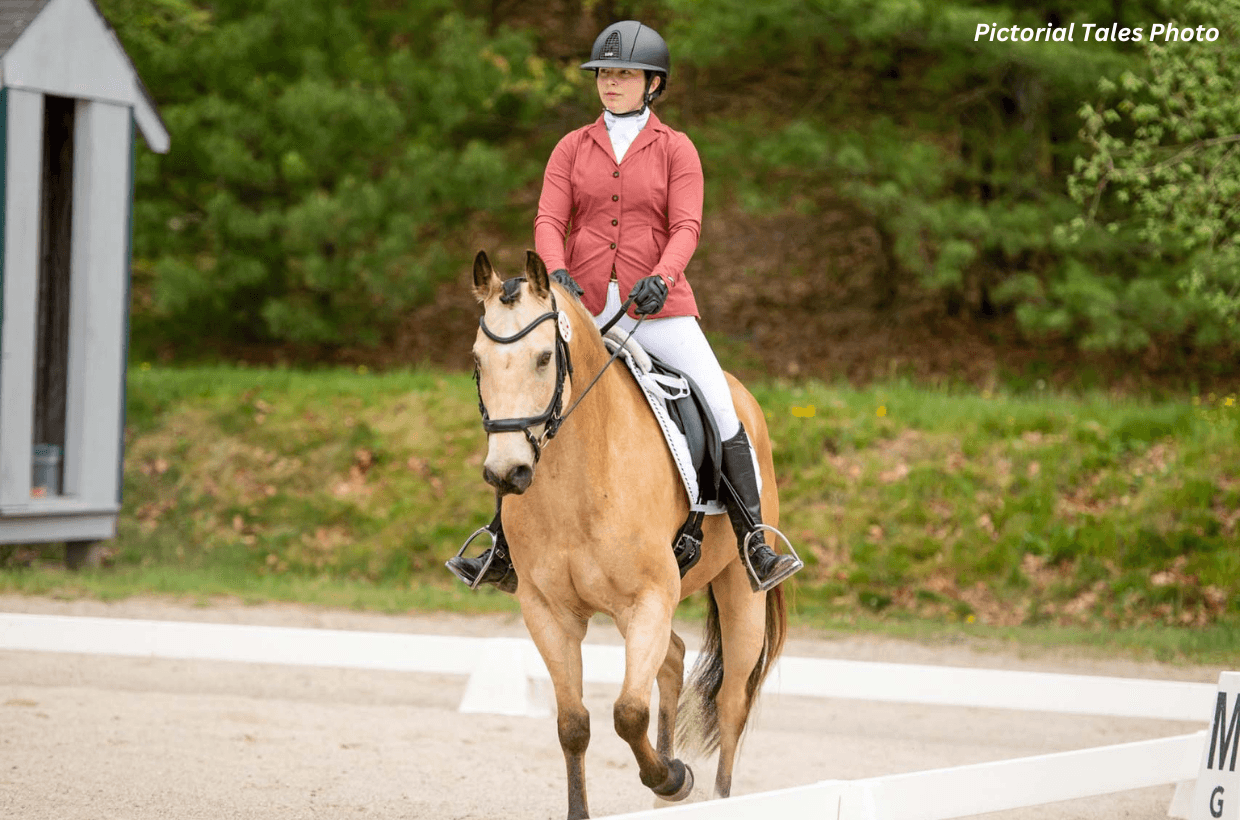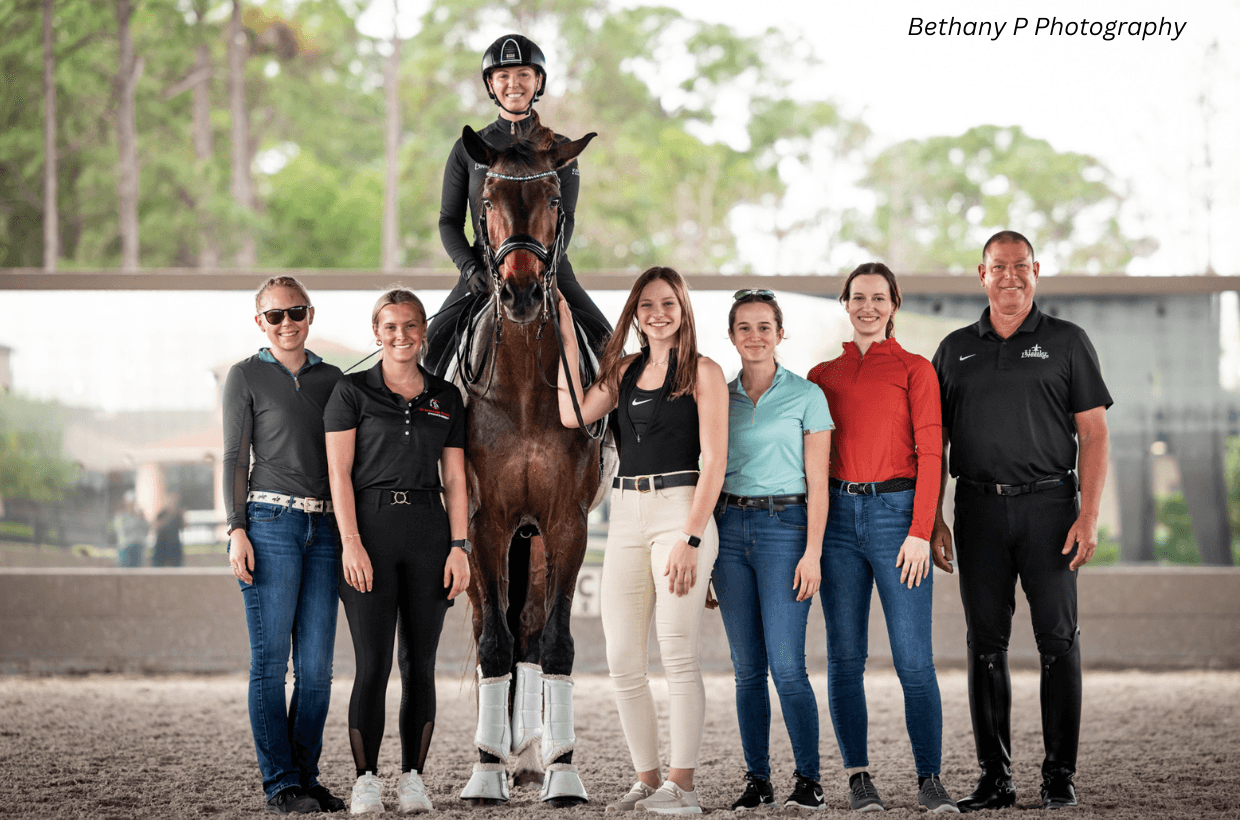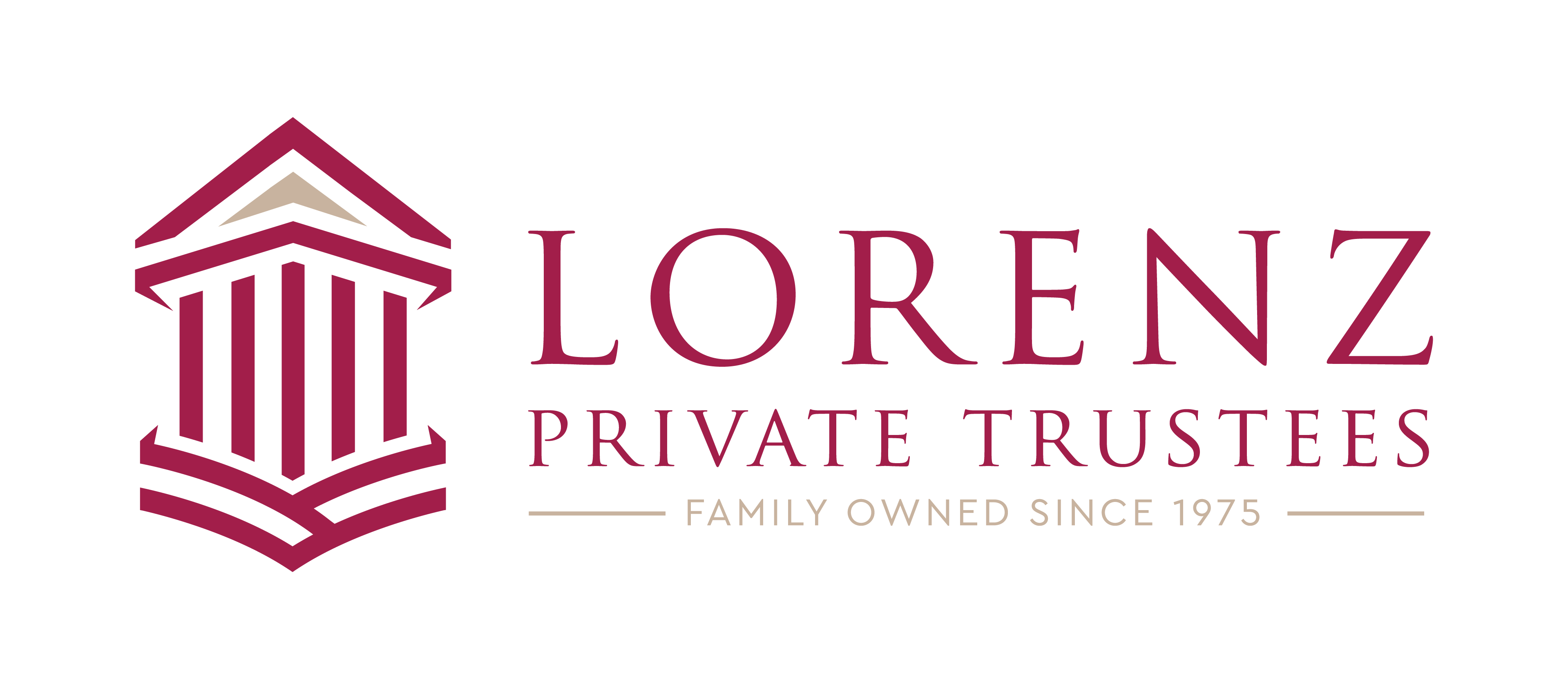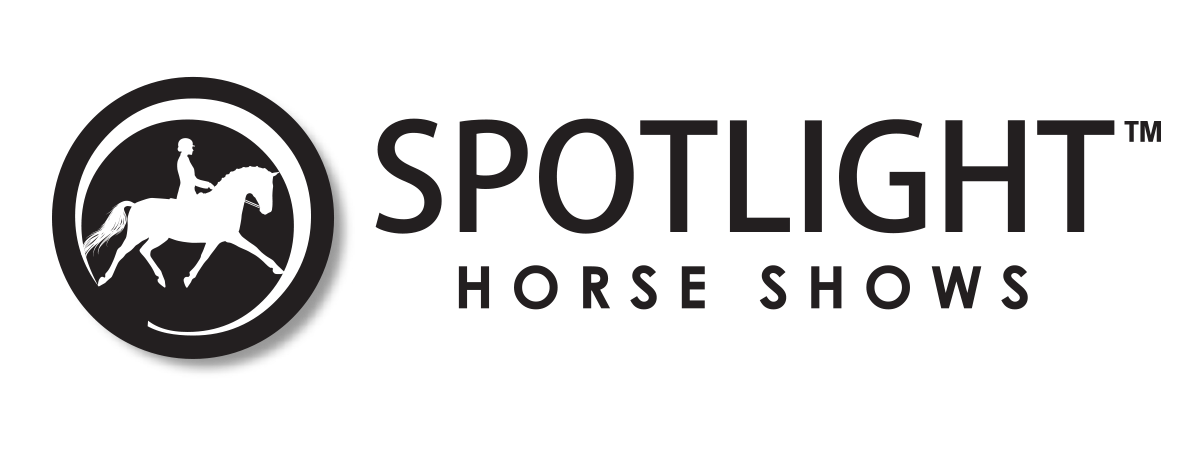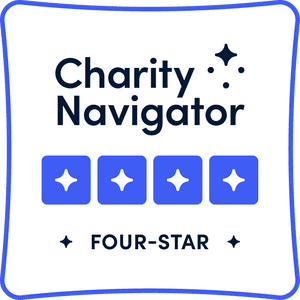Gifted Memorial Fund for Adult Amateurs Recipient: Kathryn Patton (Region 3)
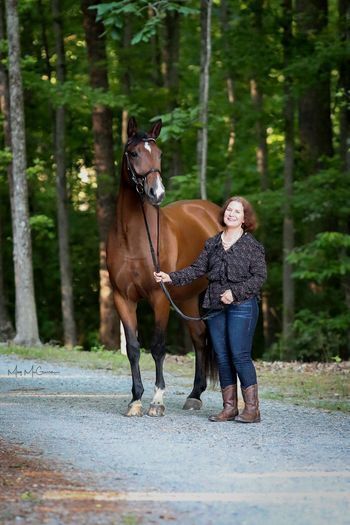
Photo by Meg McGuire Photography
With the generosity of our Gifted Memorial Fund for Adult Amateurs training grant from The Dressage Foundation, my eight-year-old Hanoverian mare, Rhapsody SCS (barn name “Fae”), and I had an amazing two-week trip in March 2023 to train with Ange Bean in West Chester, PA. Her credentials include USEF ‘r’ dressage judge, American Riding Instructors Association Level 3 certified in Dressage and Stable Management, USDF bronze medal with distinction, silver medal with distinction, and gold medal, and USDF bronze and silver freestyle bars. I met Ange when she was training in Georgia, and we have remained friends over the years and across the miles. During my ‘boot camp’ I learned so much and took so many notes in my training journal. Here are the highlights and takeaways from our experience.
Pennsylvania or Bust
After being awarded the grant in December 2022, the planning began. I knew I wanted to trailer Fae by myself from Georgia to Pennsylvania, even though the idea overwhelmed me. We had never traveled solo that far before. This trip would be at least 13 hours, so I broke it into two days. I found a website called “Bed and Bale” and there I found two wonderful “horsey VRBOs” that would be our layover farms driving back and forth from Georgia.
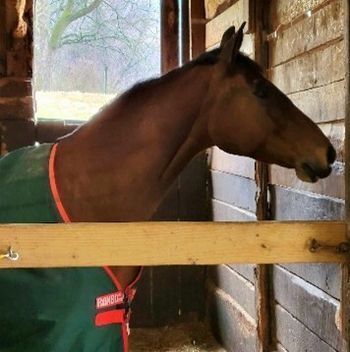
This plan worked well. The layover farms were delightful. Fae had a comfortable stall and I stayed in the barn apartment just steps away from her. My trip prep included servicing my truck and trailer, stocking emergency supplies, and upgrading my AAA membership to their premium service level. And of course, I had plenty of Coke Zero, Oreo cookies, and M&Ms in the truck to keep me energized.
Lesson Highlights
During my training, I made a point of watching other lessons and training rides every day after my lessons. All were methodical using numerous exercises that tie back to the Pyramid of Training.

Warmup
To get me in sync with Fae and to be able to address suppleness, Ange had me “step” or stretch my leg down following the swing of her rib cage. Fae’s leg swinging forward moves the rib cage out of the way and at that moment can be influenced by my leg. Ange calling out “inside” or “outside” allowed me to correlate the feeling with the hind leg in the air. I learned to feel this in all three gaits. This is something Ange learned from Suzanne Von Dietze. This really opened my awareness of how my seat and legs could influence Fae. This stepping idea is always in place while I ride now.
We worked a lot on leg-yield on the circle, in an exaggerated way, to really encourage the neck to stretch to the inside and for the inside hind to cross in the front of the hind leg. This can be done in all three gaits, in both directions. It reminded me a lot of my yoga stretches.
We also used “head to the wall” which is leg-yielding while traveling down the long side. Again, the idea is to get the horse to stretch its neck and cross the hind legs.
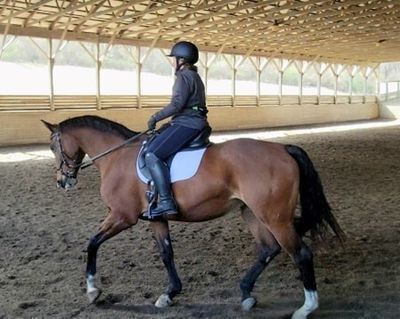
As Fae became more supple, it became easier to connect her to the outside rein. My inside leg encouraged her to stretch her ribcage longitudinally around my leg, filling out the outside rein. If she resisted, pushing against my inside leg, she would counter-flex to the outside, falling over the outside shoulder. When that happened, I would open my inside rein, and encourage her neck to follow it, while continuing to ask her to move her rib cage away from my inside leg. When she did, I would relax the inside rein and my inside leg.
To work on impulsion, we did transitions, both within the gait and between the gaits. Ange used Scott Hassler’s technique of calling out numbers as a guide for the rider to increase or decrease the horse’s impulsion. For example, a 5 was a working gait, a 4 was more collected, a 6 or 7 was medium, and 8 was extended.
The core
After the warmup, we moved to the objective of the lesson. In my case, straightness and collection for my goal to ride 2nd and 3rd Levels this year. Some of the exercises we did:
- Leg yield from track to the quarter line, then diagonal line in medium to 2nd quarter line, back to leg yield to the track.
- Canter in shoulder-fore M to B, then straight B to A, then shoulder fore K to E, then diagonal E to C.
- Diagonal M to K and from F to H, alternating between working trot, medium trot, working trot, medium trot.
- Trot, walk two steps, back to trot, walk two steps, back to trot.
- An exercise from Walter Zettl - From the rail, shallow leg-yields to the second track, change the bend to leg-yield back to the track. Once there, continue shoulder-in. Repeat several times down the long side.
- An exercise from Janet Foy - From quarter line or center line, ride steep leg yield to B or E, then shoulder-in to either H or M. Ride in both trot and canter.
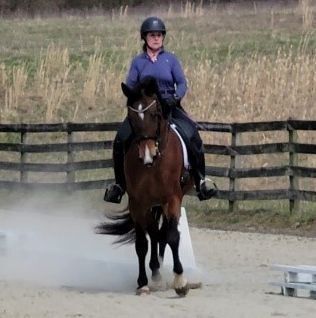
Lessons were also opportunities to work on our problems. Fae and I struggle riding corners correctly. Ange explained it as "flex-bend-straighten." Flex inside on approach, bend going into the corner, outside rein to finish, and come out of the corner straight.
Another pain point for us is simple changes. Ange had me collect Fae more in the canter to prepare and flex her in the direction of the new lead when I changed my seat from canter to walk.
Our final lesson was in the double bridle. Fae has only been in the double a few times, and the last time was late last year. She was incredible even though I kept fumbling with the rein length and how to hold them. That lesson really drove home that you shorten your reins as your horse compresses their frame (collects) to maintain contact and connection (the “circle of aids”).
Cool down and recap
Ange uses a wonderful technique at the end of her lessons. She simply says, “What did you find helpful today?” This minute or two of recap cemented in my mind the things we worked on. And of course, my riding journal was always at the ready. As soon as I finished untacking and returned Fae to her stall, I furiously wrote insights from that lesson. At night, I reread my entries and read the classic book “Riding Logic” by Wilheim Museler which Ange loaned me. Throughout my two-week visit, the book prompted me to ask a lot of questions about the seat – such as the three-point seat and the driving seat. I was building neural pathways and creating muscle memory every day.
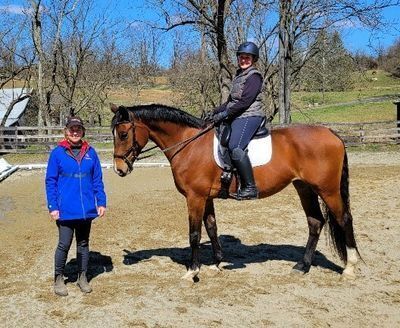
Putting it all together
I’ve learned that even though I have excellent instruction at home, I need to step up my game. My time is precious, and I need to use it wisely.
My training with Ange inspired me to create my own systematic approach to riding using the Pyramid of Training as my "North Star." My home instructor and I will review together as she knows my home situation.
1. Have an overall vision for my riding. Decide how to achieve that vision. Is it feasible in terms of time, budget, and ability? What checkpoints along the way will show I’m on track?
2. Create a training plan including a schedule and objectives for each session. Make sure it covers me and my horse.
3. Have a checklist for every ride: warm up, objectives for the day, cool down.
- Warm up – exercises to establish rhythm, suppleness, impulsion, contact.
- The core – Exercises for straightness and collection based on my horse’s level of training and ability. Incorporate test movements to validate the effectiveness of the exercises.
- Cool down and recap – stretching at the trot and canter, walking on long rein, hacking out. Did I achieve my objectives and why or why not? Discuss with my instructor if part of a lesson.
4. Track my progress according to my training plan which feeds my vision. Keep a journal or a spreadsheet since I’m a geek. Review with my instructor periodically.
All work, no play? No way.
We worked hard but did have time for other activities. The farm adjoins a land preserve that allows horses, and we had some relaxing hacks. It was wonderful having direct access, something we don’t have at home. I took a yoga class, had a personal Pilates training session, and a massage.

I also had a free weekend and visited my sister in Washington, DC. As luck would have it, it was peak bloom of the annual Cherry Blossom Festival, a long-time bucket list item. We went to the Tidal Basin Sunday morning. The weather was chilly but beautiful and I took some amazing pictures.
Georgia on Our Minds
I had a miserable head cold driving back to Georgia that lingered almost two weeks. I am slowly getting back to riding but it’s given me time to reflect and let everything sink in. It’s exciting that what I learned during the trip is making a difference at home. My home instructor, who is so supportive, sees positive changes. The trip gave me a boost of confidence in my abilities and showed me the importance of having a systematic approach, and the Pyramid of Training as my “North Star.” I’m committed to a regular riding schedule with objectives. I journal for a few minutes after each ride to increase my learning, focus, and recall. Thank you, generous donors, and The Dressage Foundation, for this once in a lifetime opportunity!
Sincerely,
Kathryn (Katie) Patton
Cumming, GA


